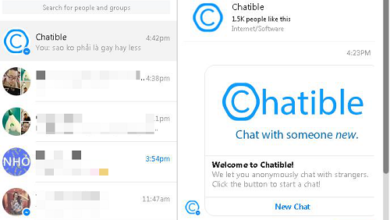How to become a graphic designer

What You’ll Need to Become a graphic designer
If you’re an aspiring graphic designer or thinking about pursuing a creative career in graphic design, you’ll want to carefully consider your training, objectives, as well as your creative and technical background. While the career opportunities are vast in the graphic design industry, it’s important to decide which direction you’ll want to go in at the onset of your college education. Choosing the appropriate coursework and receiving the right qualifications will make all the difference once you’re in the workforce.
How to Become a Graphic Designer: Education, Training, and Qualifications
Although a sense of creativity, style, originality, excellent communication skills, and a familiarity with computer graphics, animation, and design software are desirable, planning your continued education requires careful preparation, including a visual portfolio of creative work that you’ve cultivated throughout high school. Many universities recommend that students complete a year of basic art and design courses during high school to develop and learn the fundamentals of art and design. It’s essential for students to find out the specific requirements for the school or university you’re applying to and retrieve as much information as possible from your high school’s art department, guidance counselors, and other administration to help you learn and get started in the application process.
For most entry-level and advanced graphic design positions, you will need a minimum of a bachelor’s degree from an accredited university, college, or private design school. However, if you are seeking an associate’s degree, you can obtain your certification from a variety of schools. Upon graduation, a 2-year degree will allow you to try assistant-level positions within the graphic design field. For those who already possess a bachelor’s degree in another major, you can complete a 2 or 3-year program in graphic design to learn the technical requirements and receive the certification needed to pursue a career in this field. If you are going back to college (continuing education), it’s usually best to contact the admissions office of whatever school you’re applying to find out the application process and what will be required (i.e., portfolio samples, transcripts, resume, etc.).
Your Curriculum: What to Expect
Depending on what area of graphic design you wish to pursue, your curriculum may include website design, studio art, computerized design, motion graphics, printing techniques, commercial graphics production, typography, and other similar coursework that falls under a fine art or graphic design program. Other courses may revolve around design principles, including design theory and learning the design process. Additionally, a liberal arts education will also include courses such as art history, sociology, psychology, writing, foreign languages/cultural studies, marketing, and business, among others. Such coursework enables aspiring graphic designers to become more well-rounded and better prepared for their industry, which typically requires a great deal of communication and collaborative efforts.
Keeping Up with Industry Trends & Advancements
It is also essential that graphic designers keep up with industry trends and technological advancements (including updated computer graphics & design software), either independently or through professional hands-on training programs. It’s a known fact that consumer tastes and preferences change rapidly, and to keep up with the ever-fluctuating trends, graphic designers must be on their A-game at all times. Having the ability to adapt to new ideas, work under pressure, remain well-read and even follow fashion, music, and other cultural cues are integral to becoming a successful graphic designer.
It’s also beneficial to work independently as well as collaboratively, have excellent time management skills, possess self-discipline, take initiative and adhere to company deadlines and production schedules. Maintaining good business sense and having a penchant for sales and marketing are also notable attributes, particularly for those who work as a freelance designer or run their own businesses. It is also advantageous for graphic designers to maintain excellent communication skills – since you’ll be collaborating with so many different individuals, you’ll be expected to communicate your ideas succinctly through visual, verbal, and writing cues.
Why Pursue a Formal Graphic Design Education?
Although it may seem like a field you can break into by learning on the job or on your own, there are a number of advantages to receiving your bachelor’s degree in graphic design. For starters, you’ll be qualified for more graphic designer jobs – most employers won’t even consider you for a position unless you possess some form of degree or certification in graphic design. Secondly, your earning potential increases significantly if you have a degree – you can sometimes make many thousands of dollars more than an employee without a degree.
Also, those with certifications and a college education stand out amongst their peers: employers are more willing to hire those with formal training, expertise, and skills than someone who is self-taught or less educated. Finally, studying in a collegiate setting will not only provide you with the skillset and experience you need for your career but allow you to work alongside industry professionals, both on-campus and off-site (for example, an internship during your studies), and to build a graphic design portfolio that encapsulates all of the work you’ve amassed in your design courses. Your school’s faculty provides a level of instruction and personal mentoring that you just cannot replicate by watching online training courses or YouTube videos. Thus, it is highly encouraged for those interested in pursuing a graphic design career to enroll in a bachelor’s degree program.
Life After Graduation: Career Paths & Possibilities for the Graphic Designer
Now that we’ve outlined how to become a graphic designer, you may be wondering what you can expect after graduation. As mentioned, there are many different career opportunities you can pursue with this major and graphic designers work in various industries requiring their skills – but what exactly can you do with a graphic design degree? From advertising agencies working with clients, to behind the scenes roles working for a brand creating layouts and illustrations… the possibilities for graphic design are endless. Even starting your own business as a freelance designer is possible if you possess the artistic ability and verbal and visual communication skills. Depending on your specific design skill set, strengths, and areas of interest, you may want to consider the following options when planning your future:
Top 10 Careers For Individuals With a Degree in Graphic Design:
1.) Graphic Designer
2.) Art Director/Creative Director
3.) Commercial and Industrial Designers
4.) Marketing Manager
5.) Marketing Specialist
6.) Multimedia Artist/Animator
7.) Public Relations Specialist
8.) Software Applications Developer
9.) Software Quality Assurance Tester
10.) Web Developer/Web Design
As you can see, a formal education can help you to develop and achieve the proper skills and expertise needed to explore a vast array of professional career opportunities. Whether you choose to pursue your masters, a career in the graphic design industry, or branch out into a related field, the skills you’ve acquired will only help leverage your career while increasing your earning potential and opportunities for advancement.
To learn more about earning an undergraduate degree in graphic design & interactive media at NewSchool, contact our Enrollment Team.
How to Create Basic Banner Design in Adobe Illustrator for Beginners




